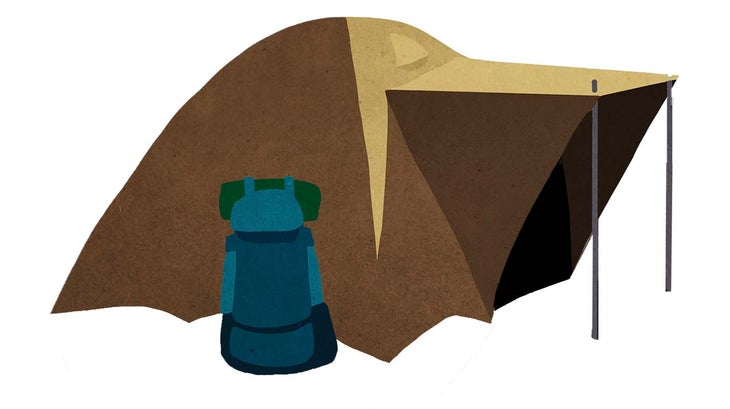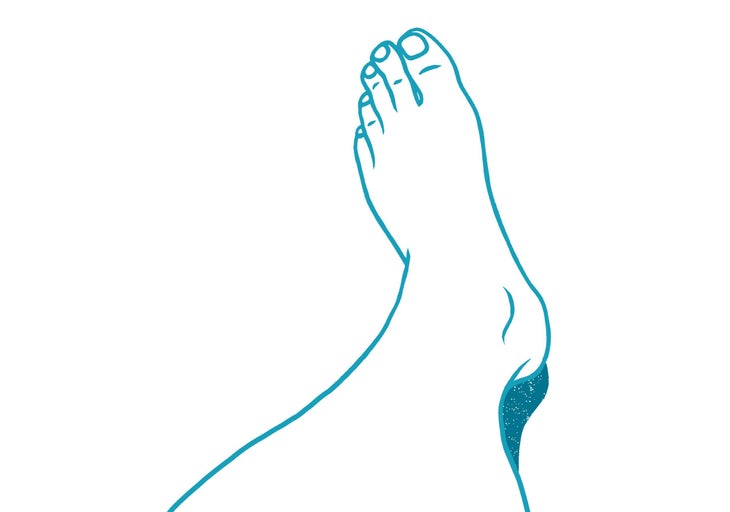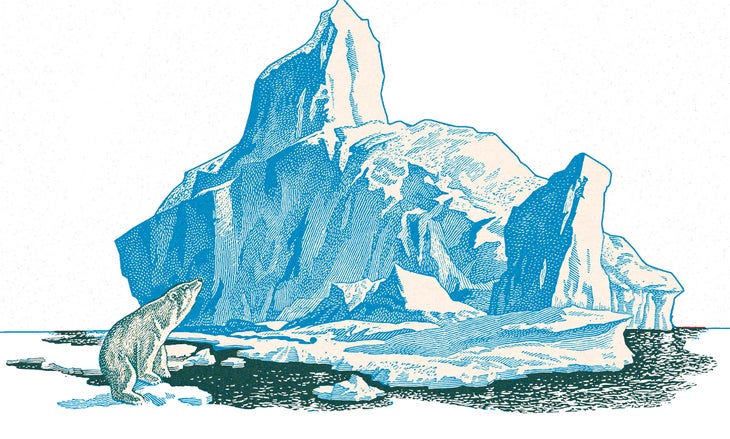Products You May Like
How do I avoid condensation in my tent?
Some condensation is unavoidable in the winter, but you can mitigate it substantially by taking advantage of your tent’s venting. A three-season tent generally has large swaths of mesh on the canopy and vents in the fly; open the vents to maximize circulation. Most four-season tents will have a fabric (not mesh) canopy and vents at the top and often at or near the floor. Open them and make sure gear or falling snow doesn’t block airflow. Cracking open the vestibule door can help, too. Also, cooking in your tent can build condensation, though it’s the least of many reasons not to. (It also makes you more vulnerable to bears and, uh, burning your tent down.)

Do toes actually turn blue when they’re cold?
Yep. Though more commonly, they’ll just look very pale. “The reason this happens is due to a lack of perfusion, or blood flow,” says SOLO Schools’ Assistant Director of Education, Josh MacMillan. “As you get cold, blood flow is reduced [to the extremities] in order to protect core body temperature as much as possible. Your body is essentially insulating the blood from the cold by reducing the flow to the furthest reaches of the body. The blue hue that you may see is just the lack of warm blood flow becoming apparent in that area.” This color change is a warning sign that your tissues are getting too cold: Actively warm them in your partner’s armpits.
Can I sunburn the inside of my mouth?
Sure can. Snow reflects up to 80 percent of the sun’s UV rays, and any area of exposed skin can get sunburnt. When I guided on Mt. Rainier, we’d make sure our rope teams applied sun protection regularly, even to their lips and the underside of their chins, noses, and arms—and that they didn’t gape, slack-jawed, at the alpine grandeur too long, lest they risk the rare and unfortunate inner-mouth burn. —Shannon Davis, Editorial Director
Why do screaming barfies hurt so bad?
The Screaming Barfies [the terrible pain you feel when your cold hands or feet warm up again] are caused by ischemia, or lack of blood flow to the hands due to a combination of body positioning and cold. You can get the screaming barfies from any cold environment, but it most commonly happens to ice climbers. The reason for this is the obvious environmental factors associated with ice climbing, coupled with having your hands above your body for long periods of time. You are draining the blood out of the hands, accelerated by the body’s protective action of slowing blood flow to the extremities to insulate you. When this happens, you are shutting off the nerves or creating numbness in the hands. When you lower your hands or start to warm them back up, blood surges to the area, essentially turning your nerves back on all at once, creating that crazy burning sensation. —Josh MacMillan, Assistant Director of Education at SOLO Schools

How do I keep my feet warm?
Even a little sweat in your socks from the drive to the trailhead can instantly zap heat: Put on a dry pair before you start hiking or skiing, and always carry extra. If you’re especially prone to cold toes, start warm by using a boot heater, try battery-powered socks, and put a hot water bottle in the bottom of your sleeping bag before bed. Always pack down booties and an extra insulating foam pad for overnights.
What’s a bear den like?
Bears don’t hibernate in the spacious dwellings stereotypically portrayed in cartoons. Hibernating bears hunker down in small, cozy spaces, like under fallen logs or bear-sized depressions in the land. In snowy environments where logs and caves aren’t available, bears adapt to fit the climate, says bear biologist Tom Smith. “The average den is a single-chambered snow cave that is just a bit larger than the mother, about 2 meters by 2 meters by 1 meter in height. Interestingly, these dens have no external openings, no vents, nothing for air exchange. What air bears breathe comes through the interstitial spaces in the snow. [During our research], we find the inside often all clawed up, suggesting that perhaps bears claw it to keep air flow going, because over time, ice forms on the inside. There’s no urine or feces—they don’t do that for months while in the den.”
If bears could dream while hibernating, what would they dream about?
It’s been said that if a lion could talk, we’d have no idea what he was talking about. A lion’s (and bear’s) experience on this planet is so radically different from ours. My guess is that their dreams are dominated by two things: finding food and fear of predation. Not all that different from us! —Tom Smith, Bear Biologist

Why don’t polar bears hibernate?
Pregnant polar bears actually do hibernate, but they’re the only ones. Nearly all hibernating mammals adapt to food scarcity every winter: Rather than die of starvation, they bulk up and sleep it off until spring. But, wherever food is abundant, bears will not hibernate. Pregnant polar bears, however, enter maternal dens where they can give birth to cubs in a relatively warm and safe environment. “If you are born a male polar bear, you will never den up again, because you can eat seals year-round,” Smith says. “In bad storms, all bears will hole up in a shelter, but that’s not a den and they’re not hibernating.” Animals in hibernation experience an extreme lowering of body temperature and heart and respiratory rates. Although a mother polar bear’s heart and respiration rates slow, her body temperature drops only a little, so it can still react quickly to predators, adapt to changing weather, and fix a deteriorating den.
How does my winter shell keep me dry?
Gore-Tex, the waterproof-breathable membrane that revolutionized wet- and cold-weather outdoor gear in the 1970s, is still at work today, along with an array of competitors. But how does it keep us dry from the elements while letting sweat escape? In Gore-Tex, the answer is in rapidly stretching a hydrophobic chemical compound called PTFE (the same stuff that coats your non-stick pans), which creates a strong material with tons of teeny, tiny holes. Pores in the membrane are 20,000 times smaller than a water droplet and 700 times bigger than a water vapor molecule, letting your sweat out without letting precip in.
How many pores are in a square inch of Gore-Tex?
9 billion.
Can I use my regular hiking boots in winter?
Yes, especially if they are ankle-height and waterproof. But even if what you have is more suited to summer, you can still get by. For dayhikes, try lining your boots with plastic bags, says Corey Fitzgerald, co-founder and guide at Northeast Mountaineering. “It might not be the most comfortable, but it will keep your feet dry and a bit warmer,” he says. A pair of gaiters will add another layer of protection, and is cheaper than a new set of boots.
What type of wood burns the longest?
When it comes to building a lasting campfire, dense woods like ash and oak are your best bet. Can’t tell your hardwoods apart? No worries—using dry wood is more important. A moisture content of less than 20% is ideal for a strong, slow burn, but finding dry wood in the field during winter is a challenge. Look for deadhang or standing dead trees that haven’t been sitting on the wet ground. Also pack a slow-burning firestarter and tinder; once you’ve got a blaze going, you can dry wood next to it.
How does frostbite happen?
“Development of frostbite can be quick or slow depending on lots of different variables,” says Dr. Luanne Freer, founder of Everest ER. Temperature, wind, and even genetics can play into it. Reduce your susceptibility to frostbite with these tips:
Keep dry. “Wet or moist socks or gloves can make the difference between a pleasant ski down the slope and a loss of tissue,” says Freer. “On Everest, we saw a tragic case of frostbite that ended with finger amputations when one hand was in a wet glove and the other dry and uninjured. Same patient, same environment— the only variable was a wet glove.” Always pack an extra pair of gloves and socks.
Stay hydrated. “The ‘thicker’ and more concentrated the blood, the more likely it will coagulate in small vessels when the tissue gets cold,” says Freer. You may not feel as thirsty when the sun is tucked behind the clouds, but you should still take regular water breaks.
Stay out of the wind. Wind steals warmth from your skin, so wear protective layers and seek shelter if you feel cold setting in.
Choose roomier gear. Anything that impairs circulation, like too-tight boots, will increase the risk for frostbite, says Freer.
Pay attention to your body. “If the tip of the nose, earlobes, fingers, or toes begin to look blanched or white, or start to feel numb, get to safety immediately,” says Freer. Cover your ears and nose, and stick your hands in your or a friend’s armpits. “If the feeling or color don’t return within 10 minutes, you are in danger and must either get to shelter or increase protective layers and stop your activity to readjust.”
